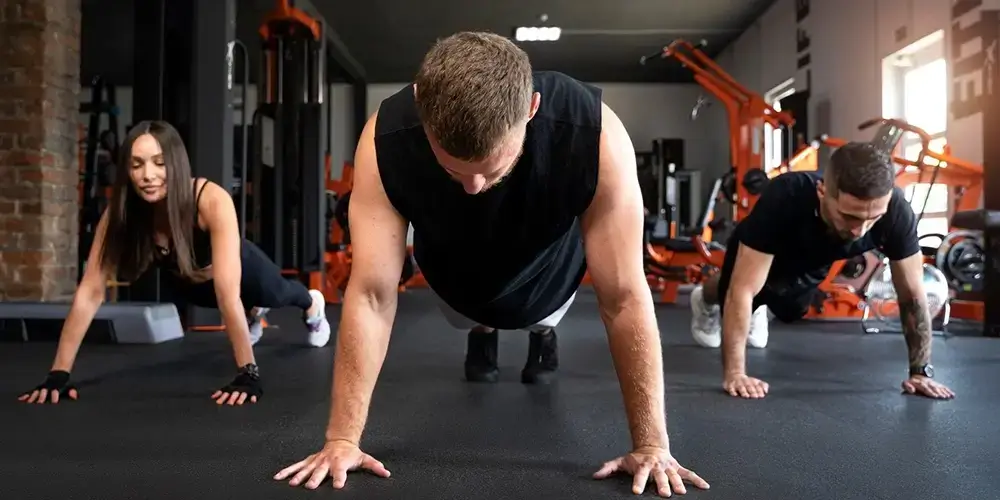

Flexibility and Mobility Exercises: Enhancing Range of Motion and Well-being
24/04/2024 Megha Kirthy 912
Flexibility and mobility are fundamental aspects of physical fitness that contribute to overall health and well-being. In this blog, we will explore the definitions of flexibility and mobility, discuss their respective health benefits, provide examples of exercises that enhance flexibility and mobility, and offer tips on how to improve range of motion effectively.
Definition of Flexibility and Mobility
Flexibility
Flexibility refers to the ability of muscles and joints to move through their full range of motion without discomfort or restriction. It encompasses both static flexibility (the ability to hold a stretch position) and dynamic flexibility (the ability to move joints through their full range of motion during physical activities). Flexibility is influenced by factors such as muscle elasticity, joint structure, and the length of connective tissues surrounding the joint.
Mobility
Mobility, on the other hand, refers to the ability to move freely and easily through a full range of motion. It involves not only flexibility but also strength, coordination, and proprioception (awareness of body position in space). Good mobility enables efficient and fluid movement patterns and is essential for daily activities, sports performance, and overall functional fitness.
Health Benefits of Flexibility and Mobility Exercises
Incorporating flexibility and mobility exercises into your fitness routine offers a wide range of physical and mental health benefits:
1. Improved Joint Health
Flexibility and mobility exercises help maintain joint health by promoting synovial fluid circulation, which lubricates the joints and reduces friction. This can help prevent joint stiffness, pain, and degenerative conditions like arthritis.
2. Enhanced Range of Motion
Regular stretching and mobility exercises increase the flexibility of muscles and tendons, allowing joints to move through a wider range of motion. This improves flexibility in daily activities and sports, reducing the risk of injuries caused by restricted movement.
3. Reduced Muscle Tension and Soreness
Stretching exercises relax tight muscles and alleviate muscle tension, reducing discomfort and soreness. Improved muscle flexibility also enhances recovery after workouts and reduces the risk of muscle strains and injuries.
4. Improved Posture and Alignment
Flexibility and mobility exercises promote better posture by lengthening tight muscles that pull the body out of alignment. This helps prevent chronic postural issues and reduces strain on the spine and joints.
5. Increased Functional Fitness
Good flexibility and mobility are essential for performing everyday tasks with ease and efficiency. They support activities like bending, lifting, reaching, and squatting, enhancing overall functional fitness and quality of life.
6. Enhanced Athletic Performance
Athletes benefit from improved flexibility and mobility, as it allows for greater agility, speed, and power. Enhanced range of motion enables athletes to perform movements with better technique and efficiency, leading to improved sports performance.
7. Stress Relief and Relaxation
Flexibility exercises such as yoga and stretching promote relaxation and reduce stress levels. Deep breathing and mindful movement during these exercises can calm the mind, improve mood, and enhance overall mental well-being.
Examples of Flexibility and Mobility Exercises
Incorporate these flexibility and mobility exercises into your routine to enhance range of motion and overall well-being:
1. Static Stretching
Static stretching involves holding a stretch position for a prolonged period (usually 15-30 seconds) to lengthen muscles and improve flexibility. Perform static stretches after a workout or as part of a cool-down routine:
- Hamstring Stretch: Sit on the floor with one leg extended and the other bent. Reach forward toward your toes, keeping your back straight.
- Calf Stretch: Stand facing a wall with one foot forward and one foot back. Lean forward, keeping both heels on the ground, to stretch the calf muscles.
- Shoulder Stretch: Bring one arm across your chest and gently pull it towards your body with the opposite arm to stretch the shoulder and upper back.
2. Dynamic Stretching
Dynamic stretching involves moving joints and muscles through a full range of motion in a controlled manner. It prepares the body for physical activity and improves mobility:
- Leg Swings: Stand on one leg and swing the opposite leg forward and backward in a controlled motion to stretch the hip flexors and hamstrings.
- Arm Circles: Extend your arms to the sides and make circular motions with your arms, gradually increasing the size of the circles to warm up the shoulder joints.
- Lunge with Rotation: Step forward into a lunge position and twist your torso towards the front leg to stretch the hip flexors and improve spinal mobility.
3. Foam Rolling
Foam rolling, or self-myofascial release, uses a foam roller to apply pressure to tight muscles and fascia (connective tissue). This helps release muscle knots and improve tissue elasticity:
- Quadriceps Roll: Lie face down with a foam roller under your thighs. Roll from your hips to just above your knees, pausing on any tender spots.
- Thoracic Spine Roll: Lie on your back with a foam roller under your mid-back. Roll up and down along your spine to release tension in the upper back.
4. Yoga and Pilates
Yoga and Pilates combine stretching, strength, and balance exercises to improve flexibility, mobility, and core stability:
- Downward Dog: Start in a plank position and lift your hips toward the ceiling, forming an inverted V shape with your body to stretch the hamstrings and calves.
- Pilates Hundred: Lie on your back with knees bent, arms by your sides. Lift your head and shoulders off the mat, extend your legs to a 45-degree angle, and pump your arms up and down.
Tips for Improving Range of Motion
Follow these tips to enhance flexibility and mobility effectively:
- Warm Up: Always warm up with dynamic movements before stretching or exercising to increase blood flow and prepare muscles for stretching.
- Stretch Regularly: Incorporate flexibility exercises into your routine at least 2-3 times per week. Hold each stretch for 15-30 seconds without bouncing.
- Focus on Major Muscle Groups: Target muscles and joints that are tight or commonly used in your daily activities or workouts.
- Listen to Your Body: Stretch to the point of mild discomfort, not pain. Avoid pushing yourself too far, as this can lead to injury.
- Stay Consistent: Consistency is key to maintaining and improving flexibility and mobility over time. Make it a habit to stretch and move daily.
- Combine with Strength Training and Cardio: Incorporate flexibility exercises alongside strength training and cardiovascular workouts for a well-rounded fitness regimen.
Flexibility and mobility exercises are essential for maintaining optimal range of motion, preventing injuries, and enhancing overall physical performance and well-being. By incorporating static and dynamic stretching, foam rolling, and practices like yoga and Pilates into your fitness routine, you can improve joint health, muscle flexibility, posture, and functional fitness. Remember to warm up properly, stretch regularly, and listen to your body to achieve and maintain optimal flexibility and mobility throughout your life. Whether you are an athlete, fitness enthusiast, or someone looking to improve daily mobility, these exercises can benefit everyone striving for a healthier, more active lifestyle.
Recent Blogs
Building a Diversified Inves ...
26/01/2025 1598
Integrating AI and Machine L ...
24/01/2025 1139
Health Insurance Regulations ...
22/01/2025 2238
Recognizing Signs of Mental ...
20/01/2025 2230
Understanding Employers' Leg ...
18/01/2025 1245
Trending Blogs
Interest Rates: How They Aff ...
20/06/2024 12535
Client Retention: Building S ...
20/06/2024 10602
Introduction to Common Law: ...
21/06/2024 9639
Common Types of Criminal Charges
02/03/2024 8825
Corporate Finance Law: Raisi ...
04/06/2024 8529











